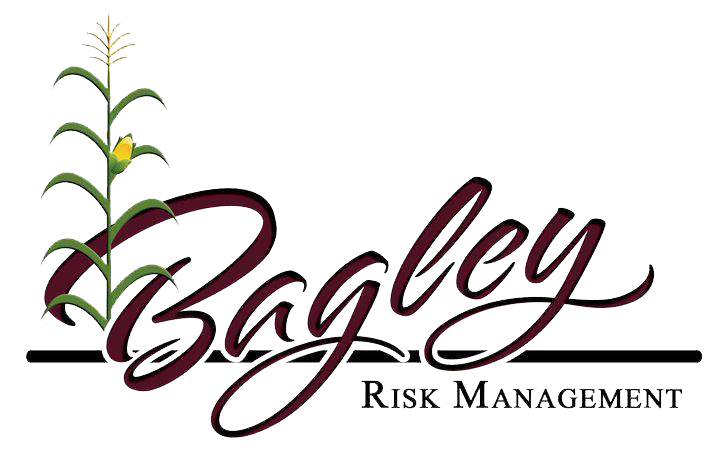Some Known Details About Bagley Risk Management
Some Known Details About Bagley Risk Management
Blog Article
A Biased View of Bagley Risk Management
Table of ContentsBagley Risk Management - QuestionsBagley Risk Management Fundamentals ExplainedThe 5-Minute Rule for Bagley Risk ManagementThe Ultimate Guide To Bagley Risk ManagementFacts About Bagley Risk Management RevealedGetting My Bagley Risk Management To Work
When your agreement reaches its end date, the last cost is computed using the CME Feeder Cattle Index. This is based upon sale barns throughout the Midwest (not simply your local market). If the index falls below your contract's protection cost, you may be paid the difference. Rate Change Variables will apply.Animals Risk Protection (LRP) is a USDA subsidized insurance policy program that assists protect producers from the risks that originate from market volatility. With LRP, producers have the ability to insure a floor price for their cattle and are paid an indemnity if the marketplace value is reduced than the insured cost.
This item is planned for. National livestock insurance.
Bagley Risk Management Things To Know Before You Get This

In the last number of months, several people at FVC and PCM have gotten questions from producers on which threat administration tool, LRP vs. Futures, is better for a pork producer? Like a lot of devices, the solution depends upon your procedure's goals and scenario. For this edition of the Dr.'s Edge, we will certainly check out the circumstances that often tend to favor the LRP device.
In Mike's analysis, he compared the LRP calculation versus the future's market close for each day of the past twenty years! The percent revealed for each month of the provided year in the very first section of the table is the percentage of days in that month in which the LRP estimation is less than the futures close or to put it simply, the LRP would potentially indemnify greater than the futures market - https://giphy.com/channel/bagleyriskmng. (Livestock insurance)
As an example, in January 2021, all the days of that month had LRP potentially paying greater than the futures market. Alternatively, in September 2021, all the days of that month had the futures market potentially paying more than LRP (no days had LRP less than futures close). The tendency that dawns from Mike's analysis is that a SCE of a LRP has a higher probability of paying more versus futures in the months of December to Might while the futures market has a higher likelihood of paying more in the months of June to November.
A Biased View of Bagley Risk Management

50 or $5. 00). As an instance, in 2019, LRP was better or within a $1. 25 of the futures market over 90% of the days in all the months except June and August. Table 2 shows the average basis of the SCE LRP estimations versus the future's close for the provided amount of time each year.
Again, this data supports much more chance of an SCE of a LRP being better than futures in December through May for many years. As a typical caution with all evaluation, previous efficiency is NO guarantee of future efficiency! It is vital that producers have accounting procedures in area so they know their cost of production and can better establish when to use threat administration devices.
The Definitive Guide to Bagley Risk Management
Some on-farm feeders may be considering the need for price security currently of year on calves preserved with the intent to feed them to a surface weight sometime in 2022, using offered feed resources. In spite of strong fed livestock prices in the present neighborhood market, feed expenses and existing feeder calf bone worths still produce limited feeding margins moving forward.
The present typical auction price for 500-600 pound steers in Nebraska is $176 per cwt. This suggests a break-even cost of $127. The June and August live livestock contracts on the CME are currently trading for $135.
Cattle-feeding ventures tend to have limited margins, like several agricultural ventures, due to the competitive nature of business. Cattle feeders can bid extra for inputs when fed cattle costs climb. https://www.flickr.com/people/200015366@N02/. This boosts the price for feeder livestock, particularly, and rather raises the costs for feed and various other inputs
Rumored Buzz on Bagley Risk Management
Areas much from major processing centers tend to have a negative basis. It is vital to keep in mind that regional impacts additionally affect basis worths for 500-600 pound steers in the loss. As an example, Nebraska cattle are close to significant handling facilities. As an outcome, basis declares or absolutely no on fed cattle throughout much of the state.
Just in 2020 did the LRP protection price surpass the ending value by enough to cover the premium price. However, the net impact of having this LRP protection in 2019-20 was significant, adding $17. 88 per cwt. to the bottom line. The result is a favorable ordinary web result over all 5 years of $0.
37 The producer premium decreases at lower protection levels yet so does the insurance coverage cost. Because manufacturer costs are so low read review at reduced coverage degrees, the producer loss proportions (indemnity/premium) increase as the insurance coverage degree declines.
The Buzz on Bagley Risk Management
As a whole, a producer should take a look at LRP coverage as a mechanism to safeguard output price and subsequent profit margins from a threat administration perspective. Some manufacturers make an instance for guaranteeing at the reduced levels of coverage by concentrating on the decision as a financial investment in risk management defense.

Report this page